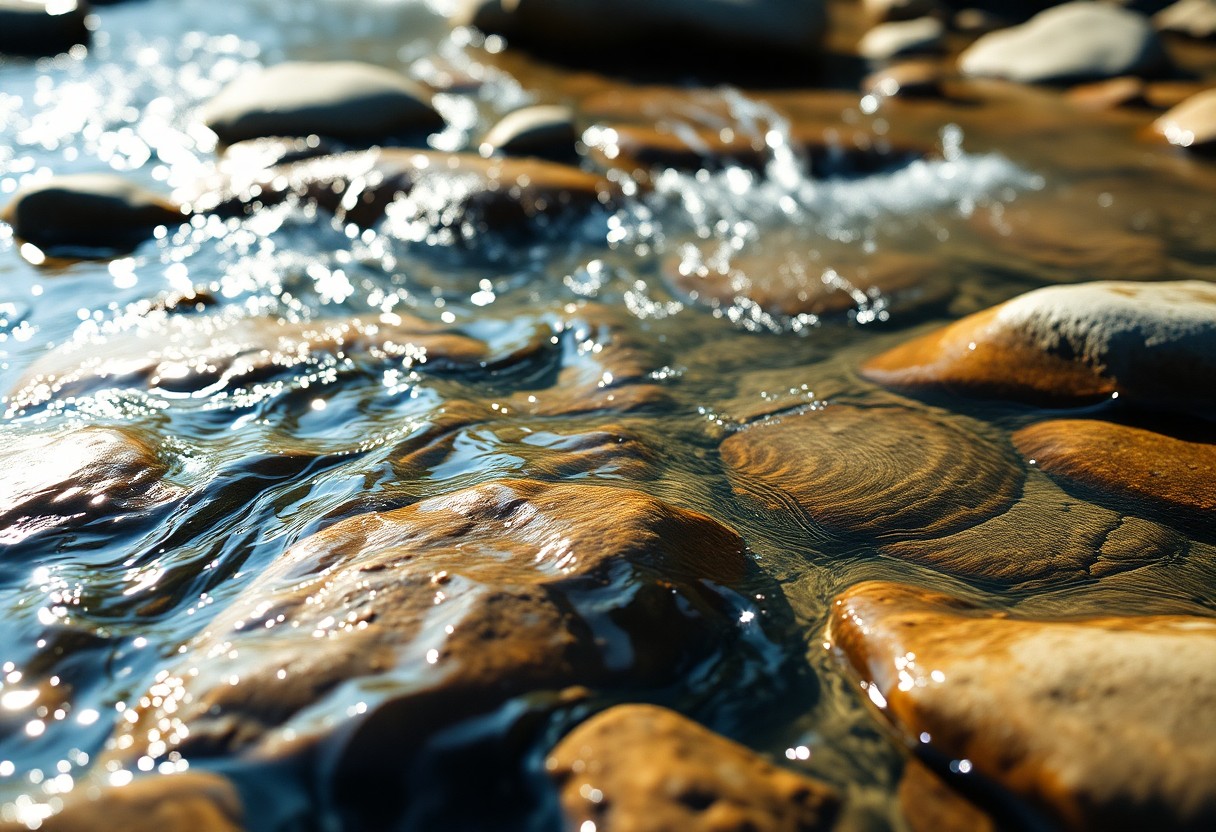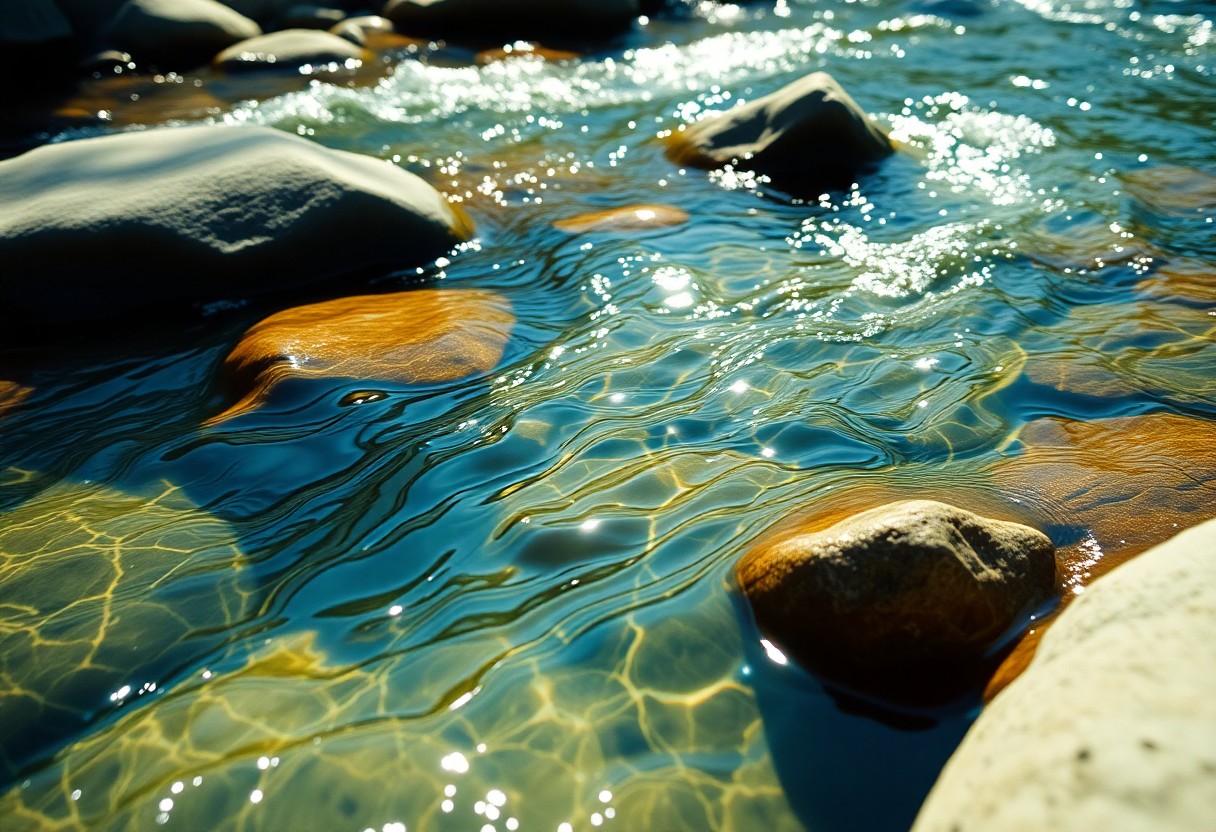Over the years, you may have admired the fluid beauty of water in art, and now you’re ready to capture that essence yourself. In this guide, you will learn techniques for rendering water realistically, focusing on shading, reflections, and the play of light. Whether you’re illustrating a serene lake or the crashing waves of an ocean, understanding these principles will enhance your artistic ability. With a few simple steps and a bit of practice, you can create breathtaking water scenes that will elevate your artwork to new heights.
Table of Contents
Key Takeaways:
- Observation: Study real water sources or images to understand the shapes and reflections of water.
- Color Palette: Use various shades of blue and green, incorporating highlights and shadows to create depth.
- Techniques: Experiment with blending and layering to achieve a realistic water texture and surface.
Understanding Water Drawing Techniques
To effectively depict water in your artwork, it’s crucial to grasp various drawing techniques that capture its unique characteristics. Mastering these methods will enhance your ability to represent water realistically, whether it’s a serene lake or a rushing river. By focusing on the interplay of light, movement, and texture, you can bring your water drawings to life, making them not only visually appealing but also emotionally resonant.
Basic Principles of Drawing Water
On your journey to draw water, understanding the basic principles will significantly improve your skills. Start by observing how light reflects off water surfaces, creating ripples and variations in color. Pay attention to the fluid nature of water and the way it interacts with its surroundings, which will help you replicate its form and motion in your drawings.
Common Methods Used in Water Drawing
Principles to consider in drawing water include the use of layering and blending techniques. These methods help you build depth and realism in your illustrations. You might also experiment with cross-hatching to depict shadows and reflections, giving your water artwork a more dynamic look.
Techniques such as layering allow you to create depth by applying multiple shades of color, gradually building up the desired effect. Blending helps smooth transitions between colors, mimicking the fluid nature of water. Cross-hatching can effectively represent the movement of water by creating varied line patterns that suggest turbulence or calmness. Using these methods thoughtfully will give your water drawings a sense of realism and vibrancy, enhancing their appeal in your overall artistic practice.
Tips for Realistic Water Representation
Even the smallest details can elevate your water drawing’s realism. Focus on these necessary tips:
- Observe how light interacts with water surfaces.
- Capture the dynamic reflections and ripples.
- Utilize a varied color palette that reflects different water depths.
- Incorporate shadows to enhance dimension.
- Practice depicting movement, which adds life to your artwork.
Knowing these aspects will profoundly improve your water illustrations.
Observing Light and Reflections
Light plays a significant role in how you perceive water. Notice how the sunlight creates brilliant highlights and shadows on the surface. Make sure to capture these nuances, as they can instantly add depth and realism to your drawing. Focus on how light bends and distorts through water, creating unique patterns and reflections.
Choosing Color Palettes for Water
Reflections in water can often guide you in selecting the right colors. Start by analyzing the surroundings of the water; the colors reflected in the water will influence your palette. You may find that varying shades of blue, green, and grey can represent the water, while earthy tones may capture the reflected environment. This careful selection not only enhances realism but also conveys the mood and depth of the water scene, helping you create a more immersive experience for your viewers.
Factors Influencing Water Drawing
All artists should consider various factors that can significantly affect your ability to accurately draw water. These include:
- Lighting
- Reflection
- Color
- Surface Texture
- Surrounding Environment
Recognizing these elements will enhance your approach to capturing the essence of water in your art.
The Environment and Context
For your drawings to come alive, the environment plays a vital role. Consider the surroundings of the water body you are observing. Elements like natural landscapes, urban settings, or changes in weather greatly affect the appearance of water. Incorporate these contextual features to give depth and realism to your work.
Texture and Movement of Water
While drawing water, pay attention to the texture and movement that characterize its flow. Different bodies of water exhibit unique qualities; for example, rivers may ripple energetically, while lakes can appear serene and smooth. Capturing these nuances can elevate your drawings.
Movement is key when it comes to portraying water. Fast currents cause chaotic waves and splashes, while calm waters reflect a peaceful surface. Experiment with brush strokes that mimic the water’s flow, like swirling lines for turbulence or smooth strokes for tranquility. Additionally, observations of light reflections and surface details can add realism. Maintaining awareness of the different textures can highlight the vital distinctions between water states, enhancing your artistic representation.

Advanced Techniques for Water Drawing
For those looking to enhance their water drawing skills, consider these advanced techniques:
| Technique | Description |
| Reflections | Capture the mirrored aspects of surrounding objects on the water surface. |
| Ripples | Add texture and movement using subtle lines to depict waves. |
| Color Mixing | Blend shades to create realistic shadows and highlights. |
Using Different Mediums
With various mediums like watercolor, acrylic, or digital art, you can bring a unique perspective to your water drawings, each offering distinct textures and blending capabilities that affect the overall composition.
Layering and Shading for Depth
An effective way to give your water drawings depth is through strategic layering and shading. You can create a sense of volume and realism by using gradual transitions in color and value.
Shading plays a significant role in emphasizing the light and shadow of water. To achieve depth, start with a base layer of lighter colors, then gradually apply darker shades, focusing on the areas where light would naturally be reflected. Use a blend of different techniques, such as hatching and stippling, to create realistic textures. Don’t overlook the importance of highlights which can be applied to accentuate ripples and reflections, making your water drawing not only more vibrant but also visually striking.

Troubleshooting Common Issues
Despite your efforts, drawing realistic water can sometimes pose challenges. You may encounter difficulties with the reflections, colors, or even the texture of the water. By identifying these common issues, you can adjust your technique and improve the overall quality of your artwork. Take a step back, assess your work, and be open to experimenting with different approaches to achieve the desired effect.
Common Mistakes in Water Drawing
Issues that may arise in your water drawings often stem from inadequate understanding of light and shadow, or failing to capture the fluidity of water. Many artists underestimate the importance of colors and blending, which can lead to a static and unrealistic depiction. Being aware of these pitfalls can help you refine your skills.
How to Correct Mistakes
With the right techniques and a keen eye, you can easily correct any mistakes in your water drawing. Start by assessing which elements detract from the overall image, and don’t hesitate to make adjustments. Add more highlights to emphasize the light reflecting off the surface, or blend colors to enhance depth. Consistent practice will help you refine your approach over time.
It’s important to take the time to analyze your work and identify specific areas needing improvement. You may find that enhancing your shading techniques or experimenting with various brush strokes can provide a more dynamic representation of water. Consider using reference images to guide you in capturing realistic reflections and movements. As you practice and apply these corrections, your ability to depict water will significantly improve, leading to more satisfying results in your artwork.
Additional Resources for Improvement
Not only do practice and dedication enhance your drawing skills, but accessing additional resources can significantly accelerate your progress. Supplement your efforts with various materials that provide technical guidance, visual inspiration, and expert advice. Exploring these resources will broaden your understanding of water representation and give you new perspectives in your artwork.
Recommended Books and Tutorials
Any aspiring artist seeking to elevate their skills should immerse themselves in recommended books and tutorials that specifically focus on drawing water. These resources cover necessary techniques, such as reflections, ripples, and light refraction, to help you capture water’s unique characteristics with realism and finesse.
Online Communities and Workshops
There’s a wealth of knowledge to gain from online communities and workshops where you can connect with fellow artists. Engaging with these groups enables you to share your work, receive constructive feedback, and learn from experienced creators. Collaborating with others will enhance your skills and foster your artistic growth through shared experiences.
This collaborative environment is extremely beneficial for your artistic journey. In these spaces, you can participate in workshops that focus on different aspects of water drawing, allowing you to experiment with techniques in real-time. Additionally, you gain access to a supportive network where you can ask questions and receive valuable critiques on your work. The camaraderie fostered in these communities often leads to inspiration and motivation, pushing you to develop your skills further and explore new ideas related to drawing water.
Conclusion
With these considerations, you can successfully capture the essence of water in your drawings. By focusing on light reflections, color variations, and texture, you can create a realistic representation. Practice different techniques and observe real water to improve your skills. For a detailed guide, visit How to Draw Water. Embrace experimentation, and your ability to draw water will enhance over time.
Q: What materials do I need to start drawing water?
A: To draw water, you will need a few basic materials. Begin with high-quality drawing paper or a sketchbook. For tools, gather pencils of varying hardness (such as HB, 2B, and 6B) for different shading effects. You may also find charcoal or colored pencils useful, depending on the style you want to achieve. Additionally, having an eraser and a blending stump can help refine your texture and shading.
Q: What techniques can I use to depict the movement of water?
A: To portray the movement of water, focus on using line work and shading techniques. Start by sketching the outline of the water’s surface, incorporating waves and ripples to create a sense of motion. Use lighter pencil strokes for highlights where the water catches the light, and apply darker shades in the depths and shadows. Blending can help create smooth transitions, mimicking the fluid nature of water. Practice observing real water to capture its dynamic behavior.
Q: How can I accurately capture reflections in water drawings?
A: Capturing reflections requires attention to detail and an understanding of perspective. Start by sketching the object that is being reflected above the water’s surface. Then, mirror that object below the waterline, adjusting the shape to reflect distortion from the water’s wave patterns. Use shading to create depth and highlights to suggest light bouncing off the water. Pay attention to the colors and tones of the object and water, as they may look different when reflected. Practice will help make your reflections more realistic.